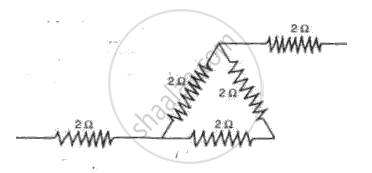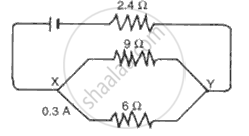Advertisements
Advertisements
Question
In which direction does conventional current flow around a circuit?
Solution
The direction of conventional current is from the positive terminal of a cell or battery to the negative terminal through the outer circuit.
APPEARS IN
RELATED QUESTIONS
What does an electric circuit mean?
Compare how an ammeter and a voltmeter are connected in a circuit.
The circuit diagram given below shows the combination of three resistors R1, R2 and R3:

Find :
(i) total resistance of the circuit.
(ii) total current flowing in the circuit.
(iii) the potential difference across R1.
Distinguish between an open and a closed circuit.
A bulb marked 12 V, 24 W operates on a 12 volt car battery for 20 minutes. Calculate:
(i) The current flowing through it, and
(ii) The energy liberated.
Tick(✓) the correct choice in the following:
When the length of a conductor is doubled the resistance of the conductor
will
Find the effective resistance in the following circuit diagrams (Fig.):

A current of 0.3 A is flowing through a branch of 6 Ω resistors in a junction as shown in fig. . Calculate the
(a) P.d. across the junction XY,
(b) Current flowing through 9Ω and 24Ω
( c) P.d. across 24 Ω resistor, and
( d) e.m.f. of the cell.

60 joules of heat was dissipated in a resistor when 20 C flowed for 5 s. Calculate:
(a) P.d. across the resistor,
(b) Resistance of the resistor, and
(c) Average power dissipated in the resistor.
An auto lamp is joined to a battery of e.m.f. 4 V and internal resistance 2.5Ω. A steady current of 0.5 A flows through the circuit. Calculate the
(a) Total energy provided by battery in 10 minutes,
(b) Heat dissipated in the bulb in 10 minutes.
